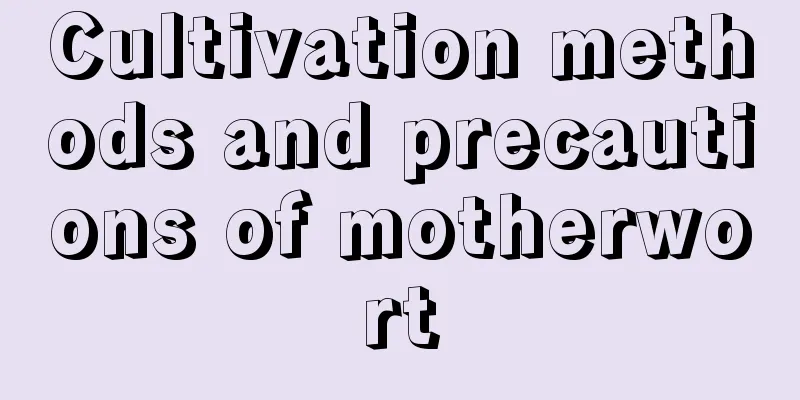Cultivation methods and precautions of motherwort

1. Maintenance methods1. Water management: Motherwort likes a warm and humid climate and requires sufficient water conditions. It should be watered in time, which is conducive to its growth, but it should not be stagnant and is afraid of waterlogging. 2. Substrate selection: Choose soil mixed with fire ash or fine soil and fertilizer. At the same time, ensure that the soil is loose and has good air permeability. 3. Nutrient management: Top dressing should be done in time during the breeding process, because motherwort is a plant that prefers fertile soil, so sufficient nutrients will help to enhance respiration intensity and improve seed germination rate. 4. Temperature management: It prefers a warm and humid environment, and the average temperature is best maintained at 26 degrees Celsius. However, it is also a hardy plant, so it will be easy to overwinter. 2. Breeding techniques1. Sowing: Motherwort is cultivated and propagated by seeds, so preparations need to be made before sowing. Prepare ash and rare earth in advance, and then mix the seeds with human and animal feces and urine and new lipid film. Then pour enough water on the surface, which is conducive to the growth and development of the seedlings. 2. Management: When planting, you must timely thin out the seeds, supplement the seedlings, fertilize and water them. When there is a lot of rain in summer, you must prevent drought and flooding, and pay attention to timely drainage. At the same time, provide sufficient light time and loosen the soil regularly to improve soil permeability. 3. Problem diagnosis and treatment1. Yellowing leaves: If yellowing leaves occur, it is most likely caused by water accumulation. Excessive water accumulation and insufficient oxygen will cause the leaves to turn yellow. At this time, we need to replace the soil with good ventilation and moderate moisture. 2. Pests and diseases: The main disease is powdery mildew, which can be sprayed with 1000 times diluted 25% triadimefon. Aphids are also the main pests that harm it, and can be killed by spraying 2000 times of 40% dimethoate solution. IV. Other issues1. Is it poisonous? It is a plant of the Lamiaceae family and is non-toxic. Moreover, its flowers are very beautiful and have a strong fragrance during the flowering period. They are very suitable for placing at home or giving to friends for viewing. 2. Harvesting: During the harvesting process, because the plants are tall, wear protective measures such as thicker clothes and gloves. |
<<: Cultivation methods and precautions of annual holly
>>: Cultivation methods and precautions of pineapple sage
Recommend
How to raise Aizenjin
1. Maintenance methods 1. Temperature: Its cold r...
How to grow juniper
1. Lighting The growth of juniper requires suffic...
What should I pay attention to when transplanting roses in the off-season?
Off-season transplanting of roses Although roses ...
Effects and functions of castor beans
1. Relieve constipation Castor seeds help gastroi...
Millet planting time and method
Millet planting time Millet is usually planted in...
How to care for cymbidium flowers during their blooming period? Can fertilizer be applied during flowering?
1. How to grow during the flowering period 1. Sui...
What is the difference between organic fertilizer and chemical fertilizer (the significance and goal of replacing chemical fertilizer with organic fertilizer)
Side effects of chemical fertilizers : Reasonable...
Difference Between Bell Pepper and Green Pepper
1. Shape distinction: 1. Sweet peppers look like ...
Does the Guanghongying Bougainvillea bloom frequently?
Bougainvillea pubescens is a very beautiful bouga...
How to distinguish between dragon bones and triangular arrows? Are they the same?
1. Different attributes Dragon bones and triangul...
How to grow agave in winter
1. Suitable temperature The most suitable range i...
What to do if the anthurium flower withers
1. Water appropriately Improper watering will cau...
Cultivation methods and precautions of June chrysanthemum
1. Maintenance methods 1. Soil: June chrysanthemu...
What flowers bloom on New Year's Day?
1. Plum Blossom When talking about flowers that b...
These vines are so beautiful when used to decorate your garden!
Coral vine The flowers of the coral vine are dazz...









